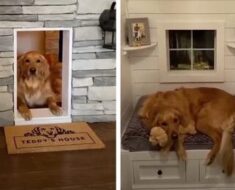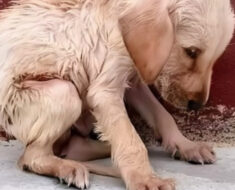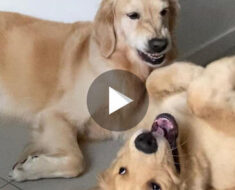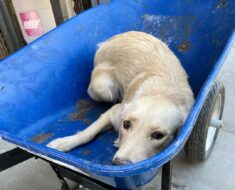The dental health of your dog is very important. Your dog’s teeth and gums are as vulnerable to infections as yours, and dental problems are the most common infection in dogs over three years old. Healthy gums and teeth are a necessary precondition for your dog to make the most of his food; the absence of quality dental care promotes the development of harmful bacteria that disrupt metabolism and often enter the bloodstream, affecting the kidneys, heart and other organs.
Dental diseases in dogs
Dental Plaque – Dental plaque is formed when bacteria, which feed on food left in the mouth, associate with saliva and food residues between the teeth and gums. In general, the plaque accumulates on the outer surface of the teeth, especially the upper premolars and molars.
Tartar – If the plaque is not removed, it mixes (within 3 to 5 days) with the minerals present in the saliva to form by hardening scale. Tartar can then be the cause of gingivitis, an irritation of the gums that is manifested by inflammation of the gums (red gums). It is also one of the main causes of bad breath.
Periodontal Disease – Tartar eventually accumulates under the gingival margin separating deep bone structures from the jawbone of the teeth and forms pockets and abscesses that further stimulate bacterial overgrowth. The damage is irreversible and often results in falling teeth, bleeding gums, difficulty chewing and infections of the kidneys, heart and liver.
Danger Signals
Check your dog’s mouth regularly for signs of oral infections. Bad breath is the most noticeable symptom, but beware of red, bleeding or swollen gums, yellow-brown tartar deposits on the teeth, and hypersalivation. In case of acute gingivitis causing discomfort to chewing, dogs may drop food from their mouths or lose weight. Pay attention to broken, discolored or missing teeth and make sure the jaw is not swollen or deformed.
Dental care at home
How much time would you spend without brushing your teeth? The teeth and gums of your dog also deserve regular care, at least 3 to 4 times a week and ideally every day.
Dental care must begin very early, even before a puppy loses its baby teeth (4-6 months). To get your pup used to exams and brushing, it’s best to start slowly and consistently. Choose a time when your puppy is calm and quiet; at first, simply lift the chins on both sides of the mouth and rub his teeth with a finger wrapped in gauze or cloth. Concentrate on the outside of the teeth, where the plaque tends to accumulate. Praise and reward him at the end of each session.
As soon as your dog gets used to this toothache, you will be able to use a soft toothbrush for dogs. To begin, do not use toothpaste. Dip the toothbrush in hot water and brush the teeth, emphasizing the point where the teeth and gums meet, and tilting the brush head 45 ° to reach the area under the gum line. Make regular movements and exert a slight pressure.
Finally, when your dog is fully used to brushing, use an enzymatic toothpaste for dogs (there are several tastes: meat, mint and malt). Never use a toothbrush for humans.
If your dog can not be manipulated (a common problem when dental care is started in old age), you can solve this problem by using: Oral hygiene gels (available from your veterinarian) that contain enzymes capable of inhibiting the bacteria responsible for plaque formation; dental pads that stick to the gums; chew toys and dental chews specially designed to reduce tartar and massage the gums.
Dry dog foods can also help eliminate plaque and tartar.
To the vet
A regular dental examination can quickly identify any problems. During an oral examination, your veterinarian will examine the face and head for asymmetry, swelling, or discharge; It will control the oral cavity, oral mucosa, dental surfaces and gums, internal surfaces of teeth and gums, tongue, tongue and groove.
the palate, the tonsils and the ventral side of the tongue.
If your dog’s teeth show tartar, the vet will remove it and polish his teeth. Routine dental cleaning can include:
rinse the mouth with an antibacterial solution.
Teeth cleaning with portable and ultrasonic scalers to remove tartar above and below the gumline.
the use of a detection product to highlight areas that still contain scale, which will then be removed
polishing teeth to remove microscopic scratches.
inspecting each tooth and surrounding gingiva for signs of infection.
Your veterinarian will then tell you how to continue your dog’s dental care.






460558 363841I believe that a simple and unassuming manner of life is best for everybody, finest both for the body and the mind. 683012